Lorenzo J. Tardon
Implementation of tools for lessening the influence of artifacts in EEG signal analysis
Nov 21, 2024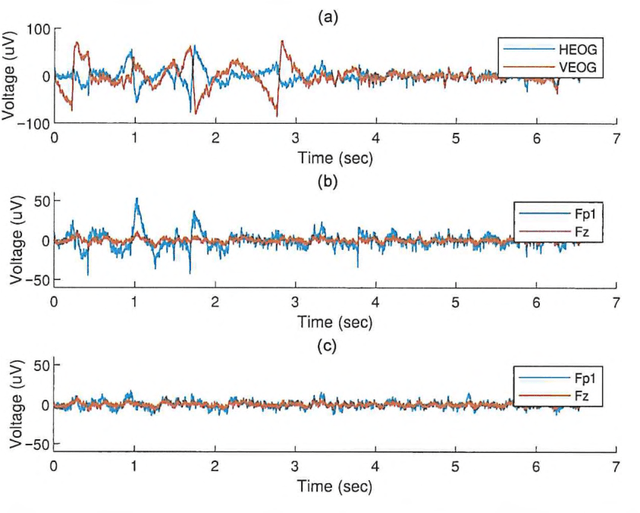
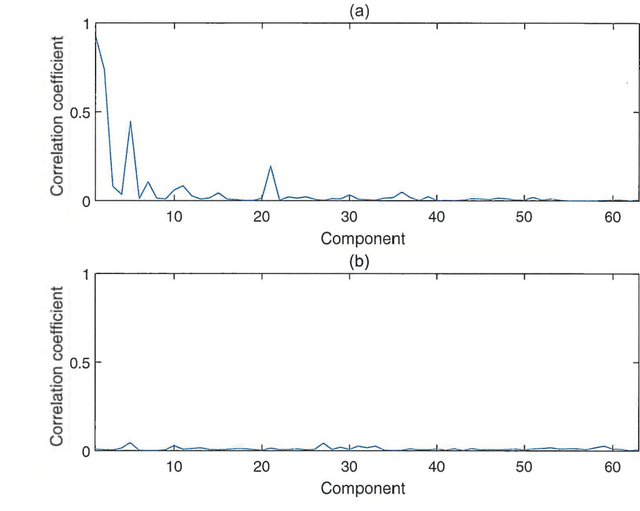
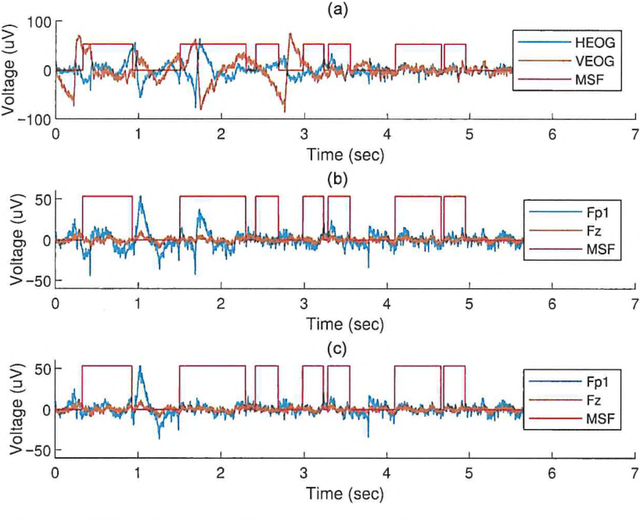
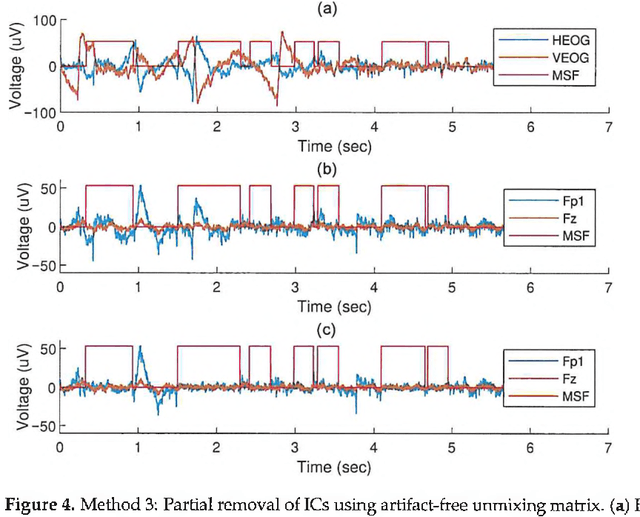
Abstract:This manuscript describes and implementation of scripts of code aimed at reducing the influence of artifacts, specifically focused on ocular artifacts, in the measurement and processing of electroencephalogram (EEG) signals. This process is of importance because it benefits the analysis and study of long trial samples when the appearance of ocular artifacts cannot be avoided by simply discarding trials. The implementations provided to the reader illustrate, with slight modifications, previously proposed methods aimed at the partial or complete elimination of EEG channels or components are those that resemble the electro-oculogram (EOG) signals in which artifacts are detected. In addition to the description of each of the provided functions, examples of utilization and illustrative figures will be included to show the expected results and processing pipeline.
* 14 pages
Energy-based features and bi-LSTM neural network for EEG-based music and voice classification
Nov 20, 2024Abstract:The human brain receives stimuli in multiple ways; among them, audio constitutes an important source of relevant stimuli for the brain regarding communication, amusement, warning, etc. In this context, the aim of this manuscript is to advance in the classification of brain responses to music of diverse genres and to sounds of different nature: speech and music. For this purpose, two different experiments have been designed to acquiere EEG signals from subjects listening to songs of different musical genres and sentences in various languages. With this, a novel scheme is proposed to characterize brain signals for their classification; this scheme is based on the construction of a feature matrix built on relations between energy measured at the different EEG channels and the usage of a bi-LSTM neural network. With the data obtained, evaluations regarding EEG-based classification between speech and music, different musical genres, and whether the subject likes the song listened to or not are carried out. The experiments unveil satisfactory performance to the proposed scheme. The results obtained for binary audio type classification attain 98.66% of success. In multi-class classification between 4 musical genres, the accuracy attained is 61.59%, and results for binary classification of musical taste rise to 96.96%.
* 12 pages
Building music with Lego bricks and Raspberry Pi
Nov 20, 2024Abstract:In this paper, a system to build music in an intuitive and accessible way, with Lego bricks, is presented. The system makes use of the new powerful and cheap possibilities that technology offers for making old things in a new way. The Raspberry Pi is used to control the system and run the necessary algorithms, customized Lego bricks are used for building melodies, custom electronic designs, software pieces and 3D printed parts complete the items employed. The system designed is modular, it allows creating melodies with chords and percussion or just melodies or perform as a beatbox or a melody box. The main interaction with the system is made using Lego-type building blocks. Tests have demonstrated its versatility and ease of use, as well as its usefulness in music learning for both children and adults.
* 21 pages
Enhanced average for event-related potential analysis using dynamic time warping
Nov 20, 2024Abstract:Electroencephalography (EEG) provides a way to understand, and evaluate neurotransmission. In this context, time-locked EEG activity or event-related potentials (ERPs) are often used to capture neural activity related to specific mental processes. Normally, they are considered on the basis of averages across a number of trials. However, there exist notable variability in latency jitter, jitter, and amplitude, across trials, and, also, across users; this causes the average ERP waveform to blur, and, furthermore, diminish the amplitude of underlying waves. For these reasons, a strategy is proposed for obtaining ERP waveforms based on dynamic time warping (DTW) to adapt, and adjust individual trials to the averaged ERP, previously calculated, to build an enhanced average by making use of these warped signals. At the sight of the experiments carried out on the behaviour of the proposed scheme using publicly available datasets, this strategy reduces the attenuation in amplitude of ERP components thanks to the reduction of the influence of variability of latency and jitter, and, thus, improves the averaged ERP waveforms.
* 11 pages
Automatic staff reconstruction within SIMSSA proect
Nov 19, 2024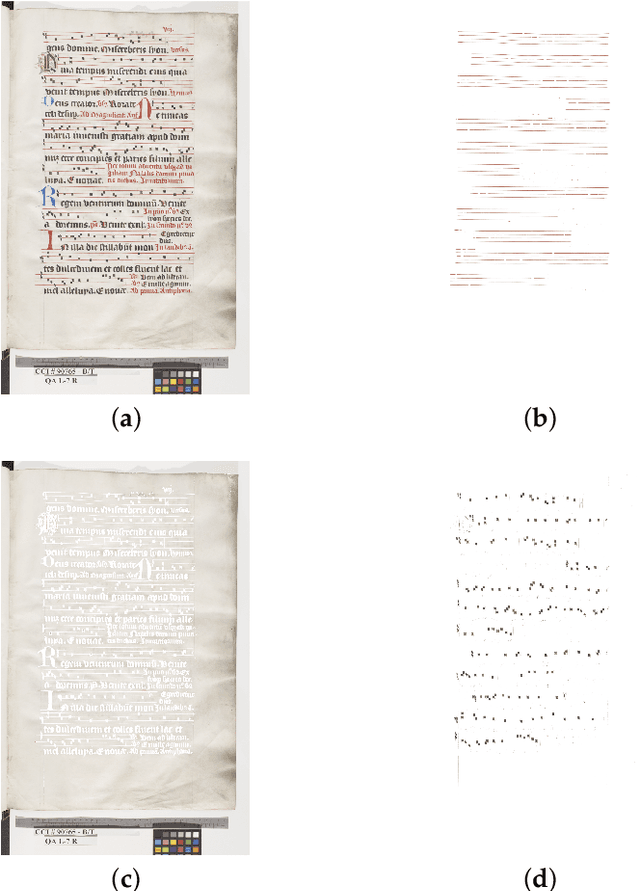
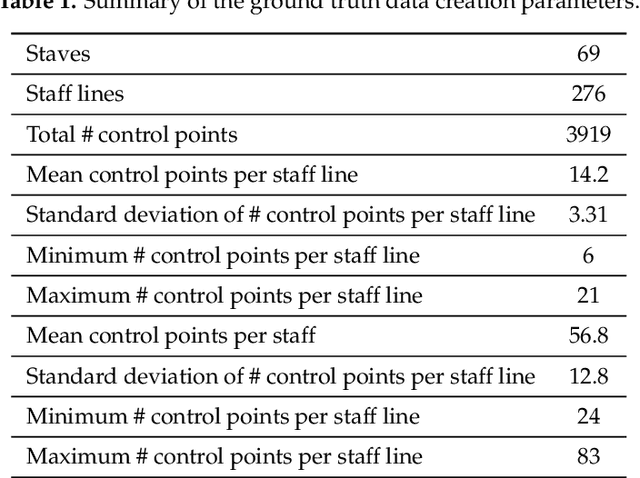
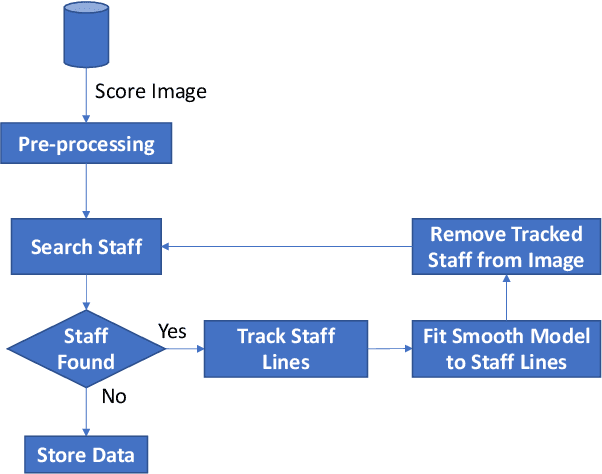
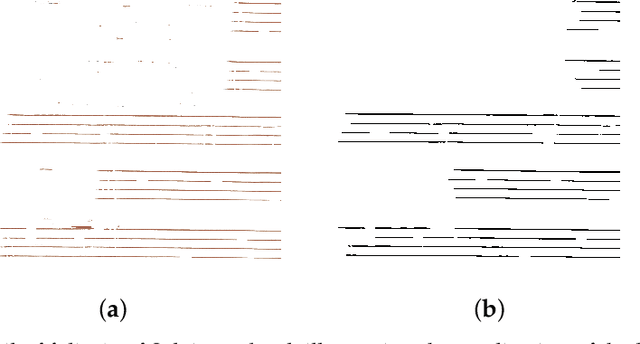
Abstract:The automatic analysis of scores has been a research topic of interest for the last few decades and still is since music databases that include musical scores are currently being created to make musical content available to the public, including scores of ancient music. For the correct analysis of music elements and their interpretation, the identification of staff lines is of key importance. In this paper, a scheme to post-process the output of a previous musical object identification system is described. This system allows the reconstruction by means of detection, tracking and interpolation of the staff lines of ancient scores from the digital Salzinnes Database. The scheme developed shows a remarkable performance on the specific task it was created for.
* 15 pages
Bi-LSTM neural network for EEG-based error detection in musicians' performance
Nov 19, 2024Abstract:Electroencephalography (EEG) is a tool that allows us to analyze brain activity with high temporal resolution. These measures, combined with deep learning and digital signal processing, are widely used in neurological disorder detection and emotion and mental activity recognition. In this paper, a new method for mental activity recognition is presented; instantaneous frequency, spectral entropy and Mel-frequency cepstral coefficients (MFCC) are used to classify EEG signals using bidirectional LSTM neural networks. It is shown that this method can be used for intra-subject or inter-subject analysis and has been applied to error detection in musician performance reaching compelling accuracy.
* 8 pages
Preprocessing for lessening the influence of eye artifacts in eeg analysis
Nov 18, 2024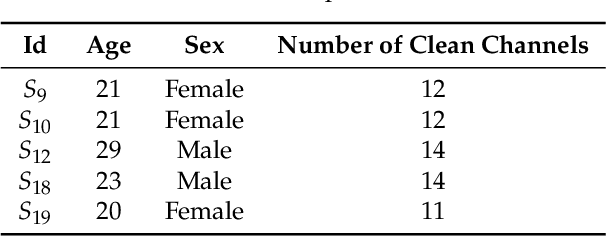
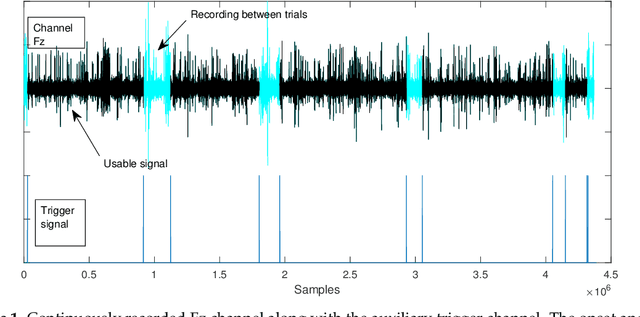
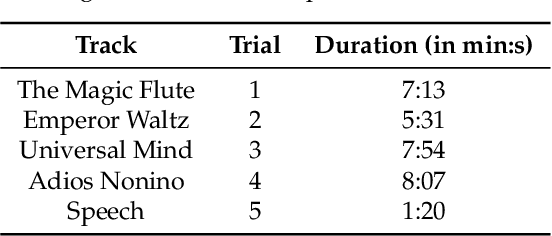
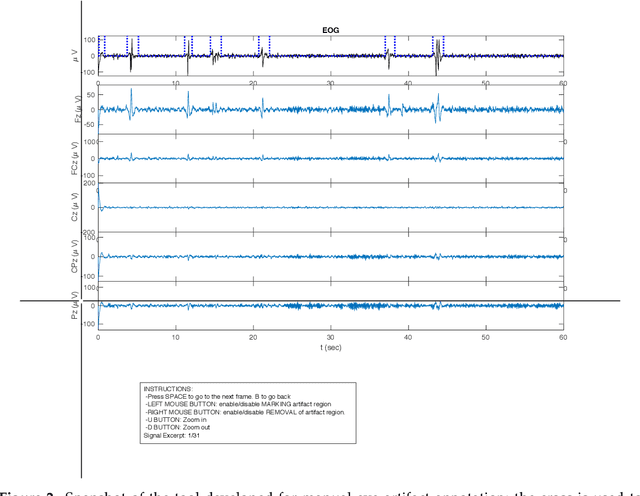
Abstract:We dealt with the problem of artifacts in eeg signals in relation to the usage of lengthy trials. Specifically, we considered eye artifacts found in eeg signals,their influence in the analysis of the data and alternatives to diminish their impact on later studies of brain activity on lengthy tasks. We proposed a scheme of partial rejection on independent signal components, providesd a method to extract eeg signal components with diministhed influence of eye artifacts, and assess the importance of using artifact free signal excerpts to extract signal components in order to analyze brain activity in a musical context.
* 16 pages, journal article
 Add to Chrome
Add to Chrome Add to Firefox
Add to Firefox Add to Edge
Add to Edge